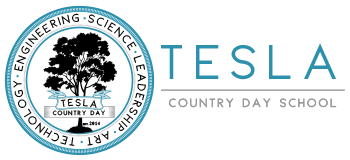Preschool Curriculum
Our balanced curriculum prepares children for kindergarten -emotionally and intellectually. Our learning community encourages the process of children’s natural curiosity and their desire to make sense of their environment to guide the learning process. This type of approach builds children’s confidence in their abilities to discover, explore, notice, wonder, and document.
Our curriculum reflects a balance of various philosophies and practices. Each moment of our day offers opportunities to explore, questions to pursue, hypotheses to investigate, and discoveries to celebrate. Our curriculum includes the following:
- An Emergent Curriculum: An emergent curriculum is child originated and teacher framed; meaning that the curiosity of the children directs the process of the learning environment and subsequent child created projects. Teachers work as researchers with children, carefully listening to the interests of the children, assisting them in hypothesizing, predicting, experimenting, and creatively expressing their knowledge.
- Research-Based Practices and Curricula: We follow the current theories and best practices in these areas. Following our philosophy of balance, we recognize that an emergent curriculum and research based curricula have their strengths, thus teachers utilize them as appropriate.
- The Outdoor Classroom: Children need to connect with and appreciate nature, while understanding how to care for it. As such, children rotate between the indoor and outdoor classrooms daily. Our outdoor classrooms contain exploration centers that are frequently updated to reflect the current interests of the children. The art of designing environments which induce curiosity and involvement with subject matter is rooted in observing children’s play, inquiry, and interaction with meaningful concepts. Children also take monthly nature walks and document their discoveries.
- The Nature-Based Playground: Our playground does not contain poured rubber, plastic, colorful play structures, or toxic sealants and coloring. We have preserved nature and placed emphasis on offering hand carved wooden structures and materials to ignite the imagination. Two decades of child development research indicate that what children need for meaningful play is simple: open space, intellectual and physical challenge, and the tools with which to materialize their own ideas. We provide an organic gardening space, an engineering station, hammocks, art easels, water play area, a magnetic wall, a playhouse, a rock and rope climbing wall, and plenty of room to run and create new structures out of our building materials. Our entire playground is non-toxic, Earth friendly, child-oriented, and sustainable.
- Project Approach/Inquiry Based Learning: Our environment is designed to assist children in exploring their interests and ideas deeply and artistically. Teachers provide materials and work in collaboration with children to develop a course of study. Children as individuals and as a group design and generate a tangible project that reflects their learning process. The projects are shared with the greater community through child generated shows, exhibits, and digital sharing methods.
- Hands-On Learning: Research shows that preschoolers learn best through playful activities, engaging all their senses in the discovery of new material. Meaningful play supports the intellectual and social aspects of learning through a child’s perspective. Our teachers intentionally create invitations to discover and play with early concepts in the areas of science, technology, engineering, literacy, ecology, mathematics, and artistic expression.
- The Environment is Also a Teacher: Our environment is instrumental to a child’s educational experience. Our indoor and outdoor classrooms are composed thoughtfully and intentionally. Our large spaces, organic fibers, soothing colors and lighting, are all mindfully created to produce comfort and curiosity. Children also learn from professionals in the community. We invite a diverse array of professionals to share their talents with our students, which further encourages children to make sense of their world in a safe and hands-on way.
- Animals as Teachers: Out little zoo offers unique opportunities to engage with animals and learn from their needs.
Inside every child is a scientist and mathematician, it takes a gentle nudge from an insightful teacher to bring this out.
**Many parents ask if we are “play-based” or “academic.” Our answer is that well designed playful environments stimulate intellectual development. A well designed program should not be one or the other, it should encompass all areas of intellectual development. The traditional debate in early childhood education is that ‘free play’ preschools or ‘formal academic instruction’ are the only two options for early childhood curriculum. This is not the case in a well-rounded integrated program. Certainly some proportions of time can be given to both of those kinds of curriculum components. *Please click on the highlighted text to read more about this important concept detailed by early childhood educational expert, Dr. Lilian Katz.









